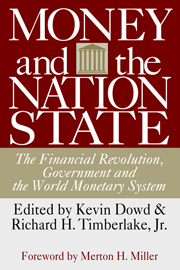In his letter (Oct. 27) responding to our op-ed “Another Black Monday May Be Around the Corner” (Oct. 23), Em. Prof. Robert Stauffer puts forward one common error and one red herring.
Mr. Stauffer states that we “ignore the existence of a banking system that is awash in liquidity with about $3.4 trillion in excess reserves,” and that these excess reserves could be lent, “thereby adding to the M2 money supply.” Wrong. The Fed alone decides the size of its assets and liabilities, not the commercial banks. When commercial banks make loans, they can’t collectively reduce their reserves at the Fed. Commercial bank reserves are used mainly for settlement between banks, but this is a zero-sum game. And when it comes to bank loans, commercial banks haven’t been adding to M2. Over the past year, commercial-bank credit has contracted by 0.7%.
Mr. Stauffer’s red herring, as is often the case with critics of monetarism, is velocity: nominal gross domestic product divided by M2. For us, velocity is better understood by considering its reciprocal, or the Cambridge k: M2 divided by nominal GDP. This represents the amount of money balances that households and firms choose to hold relative to their incomes. From our study of 90 countries over the past 30 to 40 years, we find that after a monetary disturbance the Cambridge k almost always reverts to its steady, upward trend. In the U.S., it is doing so now and has almost completed its course back to that steady, upward trend.











